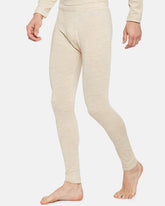Shawls from India that you must add to your wardrobe
India is well-known for its diverse cultural heritage. Every state in India has its distinct characteristics, ranging from food to language. Another distinguishing element that reflects our uniqueness is our diverse textile, and shawls from India just reflect that!
Every textile produced in India has its unique tale, nativity, and style. Many of India's cultural forms are vanishing, and textile is one of them. Particularly in the textile business. Shawls made traditionally are losing their appeal. Before we can talk about the preservation of Indian shawls, we must first understand them.
Here are some of the popular shawls from India from different regions of the country.
Shawls from India that you must add to your wardrobe
Pashmina shawls
Found exclusively in the northernmost state of Kashmir, the Pashmina shawls are the most popular among the bunch. Made from the fleece of the local Cashmere goat, the pashmina shawl displays some unique properties with the softness and warmth that it holds.

Produced mainly through traditional means, the pashmina shawls are recognized due to their beautiful motifs. The skills of individual weavers show off with a spectacle of colors in delicately woven floral patterns that seemingly integrate with the whole cloth.
Pashmina shawls come in a variety of sizes, including scarves, wrap, stole, and complete shawls.
How to identify the original Pashmina shawls
- The smell of a genuine Pashmina shawl is similar to that of burnt hair. The reason for this is that it is made of genuine mountain goat hair. Many dealers burn the shawl's thread to establish the authenticity of their goods.
- Original Pashmina shawls do not transmit light, therefore check for transparency before purchasing.
- If you see flawless patterns on Pashmina shawls then definitely it’s not the original one. Because it's done by hand, a real Pashmina with careful handcrafting will have minor flaws.
- When acrylic and polyester synthetic fibers are brushed together, they generate a lot of static energy and little sparks. But you will not see this feature in the original Pashmina shawls.
- 5. Pashmina is an animal fiber that, no matter how hard you try, will likely form little balls (which is referred to as Pilling). Pilling can be decreased to some extent, but it will not go away completely. If there is no pilling, there is likely some synthetic mixed in.
Also beware of faux Pashmina shawls, which look exactly like Pashmina - Soft and Silky. These are low-cost shawls made of synthetic fibers such as viscose.
Kullu shawls
Native to the state of Himachal Pradesh, the Kullushawls are best recognized due to their patterned structure. These shawls are created with a dovetail or slit tapestry technique and are uniquely characterized by their coarser design.
The raw material comes from the local population of goats, such as Deshkar, Bihang, Australian Merino Tops, Angora, etc. The motifs on a Kullu shawl are spectacular, to say the least with a colorful design based on a variety of themes such as religion, traditions or just plainly depicting the local philosophies about life.
How to identify the original Original Kullu shawls
- Different colored weft threads of short length are used to create designs.
- In the design area, no continuous thread from one end to the other is used.
- Twill lines run diagonally across the basic fabric. The sophisticated multi-color bold geometrical pattern woven with wool strands makes the Kullu shawl famous.
Naga shawls
The shawls that are typically worn by many in Nagaland, are popular due to their out-of-the-world exotic look and designs. These are traditional ritual shawls displaying within its motifs, a complex symbolism that originates from the folk stories in the region.

These are typically wool shawls in various colors, such as red, black, and blue, with supplementary-weft patterns. This is achieved by the use of backstrap looms, as two or three segments are produced just to be stitched together later on.
How to identify the original Naga shawls
- Naga Shawls are unisex and made for both men and women. Shawls from other parts of North east India are made for women only.
- The geometric designs and patterns set out on a simple woven basis, a trait unique to Naga shawls, make them easy to distinguish.
Kalamkari shawls
In the southern state of Andhra Pradesh, the cotton-based shawls with hand-printed or block-printed designs are what you are going to get. The designs could be of Srikalahasti or the Machilipatnam style, both of them hold a common theme of their designs being hand-made by a ‘pen’.
What makes things interesting is the beautifully crafted designs with religious themes, which are only decorated with rich natural colors.
How to identify the original Kalamkari shawls
The products which are sold as Kalamkari are not the original ones. It's screen-printed Kalamkari with chemical colors. Then there's the question of how to tell if a shawl is genuine Kalamkari.
- Screen and digitally printed kalamkari appear flawless, however, true hand-painted kalamkari has tiny stains and flaws because it is hand-painted by artists.
- You can feel the smell of Milk slightly, in the original Kalamkari, because Buffalo’s Milk is used in the making of Kalamkari fabric to avoid smudges of dyes.
- The textiles are soft, raw, and earthy because they are washed numerous times during the process. Vegetable dye printed fabrics do not fade in, even after repeated washings and exposure to sunlight, because they are not photosensitive like chemical dyes.
Dhabla shawls
In the semi-desert region of Kutch, The term Dhabla shawls represent a woolen blanket popularly worn by the people from the Rabari and Bharwad community there.
Made from sheep wool, the seemingly simpler shawls in white or black, are beautifully ornamented with extra weft motifs. The textured surface is decorated with varied colors, many times only along the borders to keep the middle chunk of the cloth completely plain.
How to identify the original Dhabla shawls
The unique feature of Dhabla shawls is their heavy look. Even raindrops cannot penetrate the shawls because they were so closely knit. This is how you can find out the real ones from the fake.
Rabari shawls
We are back in Gujarat again, and here we find a unique piece of embroidery art. Commonly found in the Mutwa or the Jat community, Rabari shawls are made up of fine hand spun cotton with some beautiful embroidery work done with silk.

How to identify the original Rabari shawls
The major attraction for these shawls is, however, the liberal use of mirrors sawn along with the embroidery. Excellent needlework is applied to carry out chain stitching as diverse colors are used which include red, white, golden yellow, blue and black.
Shawl weaving: Moving towards the present
In the traditional method of shawl making, the household looms, such as the pit loom, muffler loom, or border looms are used with handspun yarn, to create a denser fabric that is tougher and warmer than many others.
 Nowadays, the non-household producers make use of throw-shuttle and the fly-shuttle frame looms which completes a shawl within two to three days, the feat previously managed within multiple weeks or even years with traditional means.
Nowadays, the non-household producers make use of throw-shuttle and the fly-shuttle frame looms which completes a shawl within two to three days, the feat previously managed within multiple weeks or even years with traditional means.
Many weavers in India today prefer traditional methods, as they are also observed to produce a finer yarn with the tougher shawl which in turn is warmer.
Occasions to wear your shawl
There are a lot of occasions where you can flaunt your shawl and some of them are;

- Winter Wedding - If you're attending a winter wedding, any of the above Shawls will look great with your Kurtis. For a Mehendi or Haldi function, Kurtis and embroidered Pashmina shawls will be perfect. Wrapping scarves over blazers and pairing them with designer kurtas can give you a royal look.
Besides wearing it for weddings, shawls are also an exclusive option for gifting something Indian and traditional.
Apart from the fashion element, shawls and stoles can be wrapped over your neck in many layers. This will keep you warm and protect you from the cold.
- Party - Party wear dresses like gowns, lehengas can be paired with rich designed shawls. Long Suits with Kalamkari aari embroidery shawls will be an excellent choice.
- Social Gathering - Shawls can be worn to any social gathering and can be styled effortlessly. Wear a Kurti with a shawl draped around your neck and hanging in the front. This shrug style is suitable for people who like simple styling.
- Dinner date / Birthday parties - I am sure that you will have a full black T-Shirt, wear it for dinner date/birthday parties. Don't wrap the scarf around your neck in multiple layers leaving equal lengths hanging on either side. This gives a classy look to both men and women.
You can wear your shawl in several ways that suit you physically. You can wrap your shawl around your body or just place it on your shoulders, any way you choose.
I hope this blog post has given you a better understanding of Indian shawls. Remember to buy them from a reliable source. In this way, you can support true artisans who have been practicing their craft for many years.
There are many companies that offer free delivery and a great price on Indian shawls, be sure to support a local business owner today!
This blog article was updated by Kosha Team Member – Keerthiga Rani.
Editor’s Picks
Packable Puffer Jacket For Men
- ₹6,300.00
₹8,400.00- ₹6,300.00
- Unit price
- / per
Men's Full Sleeves Thermal | Merino Wool + Bamboo
- ₹4,940.00
₹7,600.00- ₹4,940.00
- Unit price
- / per
Packable Puffer Jacket For Women
- ₹6,300.00
₹8,400.00- ₹6,300.00
- Unit price
- / per
Women's Full Sleeves Thermal | Merino Wool + Bamboo
- ₹4,940.00
₹7,600.00- ₹4,940.00
- Unit price
- / per
Men's Merino Wool Cushioned Technical Socks
- ₹1,038.00
₹1,790.00- ₹1,038.00
- Unit price
- / per













